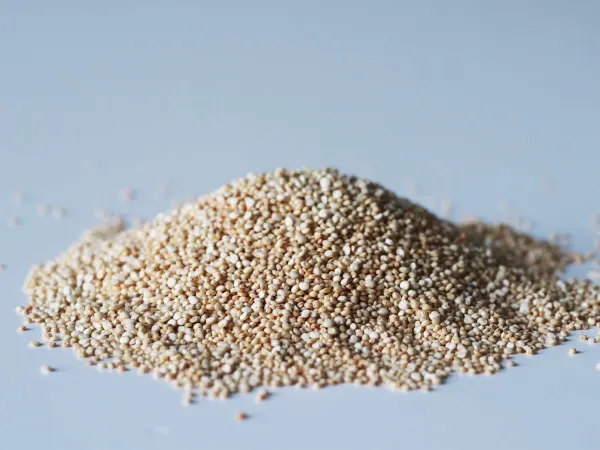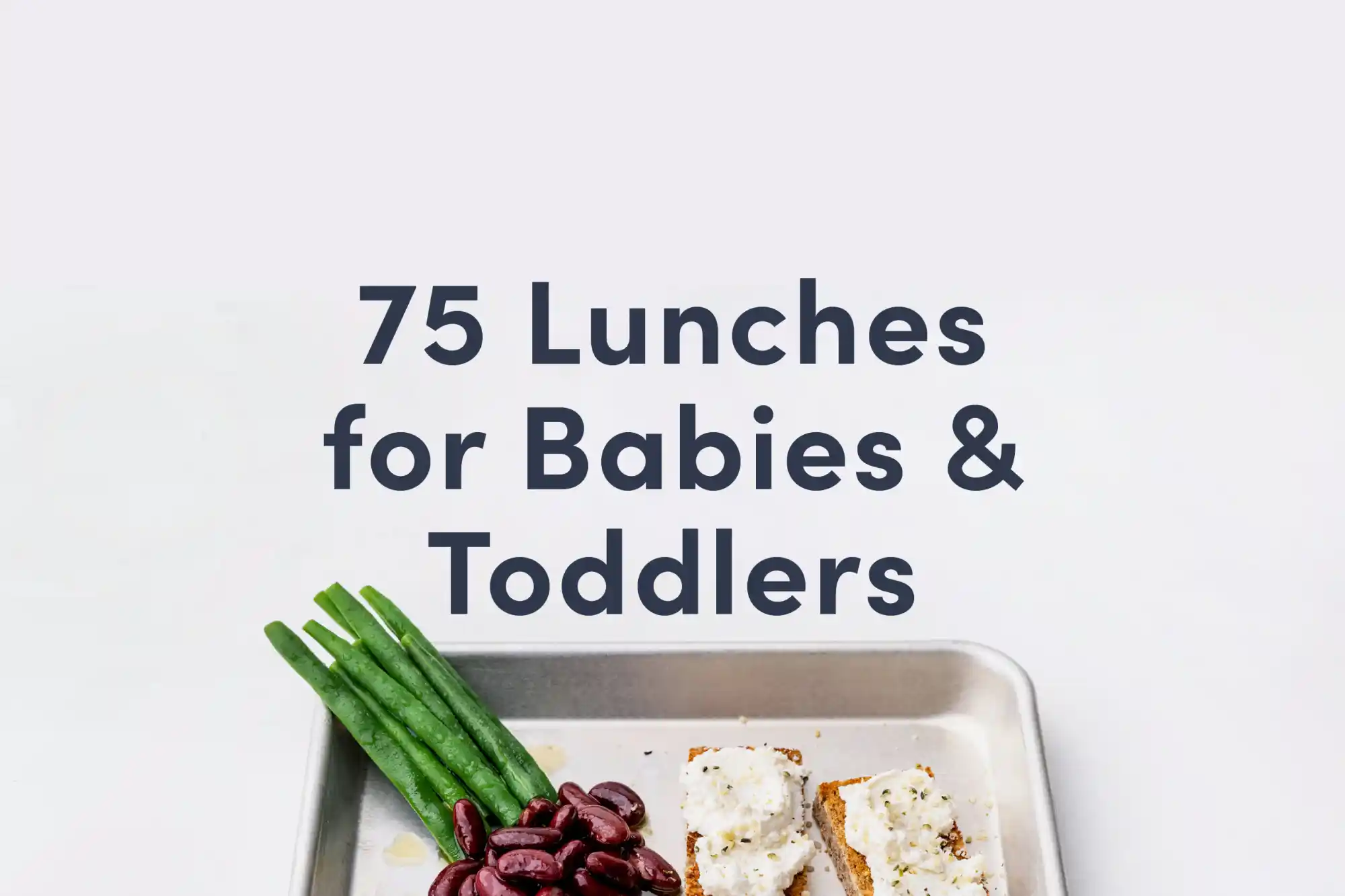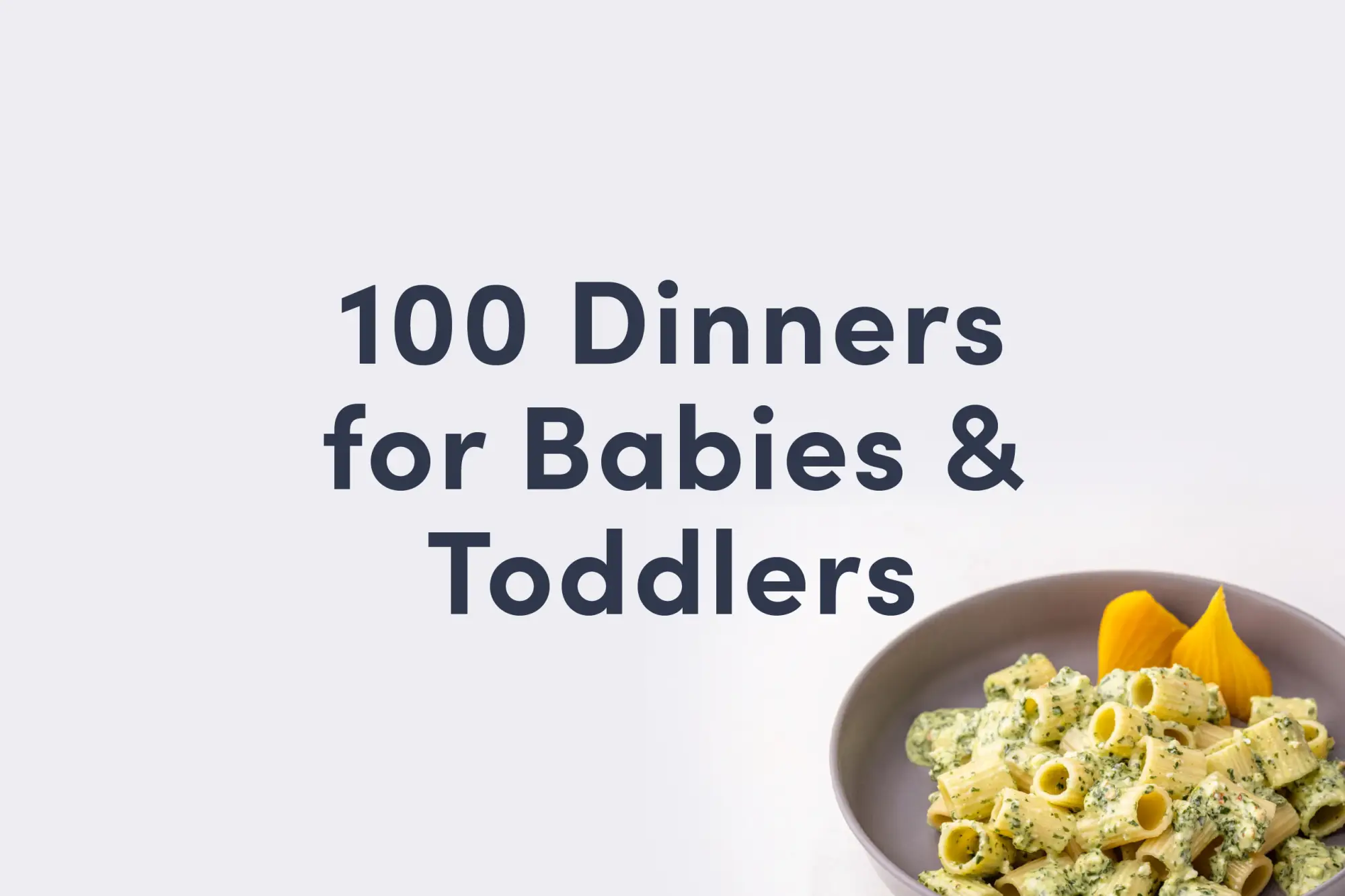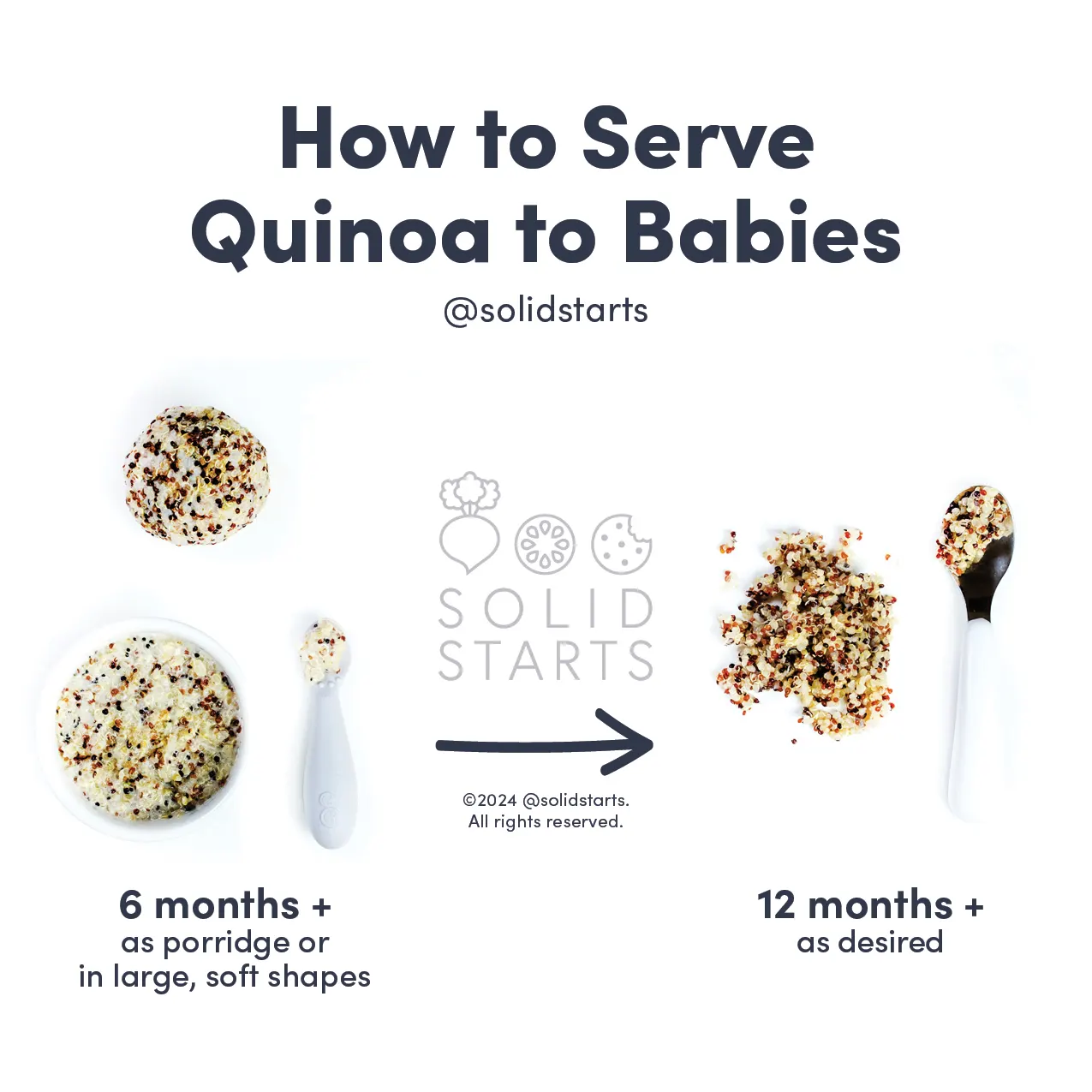Quinoa
Seed
Age Suggestion
6 months
Iron-Rich
Yes
Common Allergen
No

When can babies have quinoa?
Quinoa may be introduced as soon as baby is ready to start solids, which is generally around 6 months old.
Quinoa is native to South America, where the plant has grown wild in the Andes Mountains for thousands of years. In Quechua, the ancestral language of the Incan people, quinoa is known as chisiya mama (or “mother of all grains”) and holds sacred status as a staple food.
Is quinoa healthy for babies?
Yes. Quinoa is rich in carbohydrates to provide quick energy, protein for the essential building blocks of growth, and fiber to help baby’s gut microbiome flourish and balance blood sugar levels. It’s also packed with zinc, folate, and vitamin B6, as well as a dash of iron and plant-based omega-3 fatty acids—important nutrients that baby needs for healthy blood, taste perception, and cognitive development. Quinoa is full of antioxidants and polyphenols as well, nutrients that help improve the body’s resilience and recovery.
Is quinoa gluten-free?
Yes, quinoa is a gluten free seed and is therefore suitable for those with celiac disease or non-celiac gluten sensitivity. Talk to a pediatric health care provider if you are concerned about issues related to gluten and digestion. See our celiac page for more information.
Is quinoa a common allergen?
No, quinoa is not a common allergen. However, while rare, serious allergies to quinoa have been reported. Research is currently limited, but individuals with buckwheat or amaranth allergy may be more likely to experience reactions to quinoa as well.
Some individuals may be sensitive to saponin, a soapy and bitter substance that coats the outer layer of the quinoa seed. Most saponins are removed during processing of quinoa. However, individuals who frequently consume quinoa may begin reacting after repeated exposure to residual saponin, and may benefit from rinsing and/or soaking the quinoa prior to cooking.
As you would when introducing any new food, start by offering a small quantity for the first few servings. If there is no adverse reaction, gradually increase the quantity over future meals.
Is quinoa a choking hazard for babies?
No, quinoa does not typically pose a high choking risk, although firm clumps of baked or fried quinoa could. Loose grains of cooked quinoa could be aspirated (when something is breathed into the airway but does not block it) in the event of an uncoordinated swallow, as could popped or puffed quinoa. To reduce the risk, prepare and serve quinoa in an age-appropriate way. As always, make sure you create a safe eating environment and stay within an arm’s reach of baby during meals.
Learn the signs of choking and gagging and more about choking first aid in our free guides, Infant Rescue and Toddler Rescue.
Videos
Does quinoa need to be rinsed before cooking?
No, it is generally not necessary to rinse quinoa before cooking it. Quinoa seeds have a naturally-occuring coating that contains saponin, a compound that can taste bitter and/or cause stomach upset in some individuals. However, most brands of quinoa have been pre-rinsed and do not need to be washed again unless you’d like to. When quinoa is consumed in normal amounts, saponin does not usually pose an issue and even offers some benefits, including antifungal, antiviral, anti-inflammatory properties. When consumed in large amounts, the compound can cause problems for people with sensitivities or digestive problems.
When can babies have popped quinoa?
Popped quinoa can be sprinkled on top of or mixed into other foods as soon as baby is ready for solids, generally around 6 months old so long as the food that it is mixed into is soft. Because of the potential for the tiny, dry, light-weight kernels to be accidentally sucked into the airway if not mixed into other foods, we recommend avoiding serving them on their own and avoid serving it mixed into crunchy foods such as crackers or granola until after 12 months.
How do you serve quinoa to babies?
Every baby develops on their own timeline, and the suggestions on how to cut or prepare particular foods are generalizations for a broad audience.
6 months old +:
Offer cooked quinoa as porridge or fold it into another scoopable dish for baby. Alternatively, serve large, soft quinoa balls or patties. Both of these preparations hold the cooked seeds together, making it easier for the child to self-feed. You can also serve age-appropriate baked goods or porridges made from quinoa flakes or popped quinoa. Keep in mind quinoa may spread in the mouth and cause harmless gagging.
12 months old +:
Serve cooked quinoa as desired, including with a utensil. Keep in mind using a spoon to eat quinoa will likely be frustrating for most young eaters–don’t expect much success with this until closer to 2 or 3 years of age. Offering a spoon with a deep bowl, like a measuring spoon, can be helpful, as can mixing quinoa with a sauce, small amounts of melted cheese, yogurt, or even a bit of olive oil. Alternatively, serve quinoa balls or patties or baked goods made from quinoa flakes or popped quinoa for the child to take bites from.
For more information on how to cut food for babies, visit our page on Food Sizes & Shapes.
Written by
Expert Tips Delivered to Your Inbox
Sign up for weekly tips, recipes and more!
The content offered on SolidStarts.com is for informational purposes only. Solidstarts is not engaged in rendering professional advice, whether medical or otherwise, to individual users or their children or families. No content on this site, regardless of date, should ever be used as a substitute for direct medical advice from your doctor or your medical or health professional, nutritionist, or expert in pediatric feeding and eating. By accessing the content on SolidStarts.com, you acknowledge and agree that you are accepting the responsibility for your child’s health and well-being. In return for providing you with an array of content “baby-led weaning” information, you waive any claims that you or your child may have as a result of utilizing the content on SolidStarts.com.







